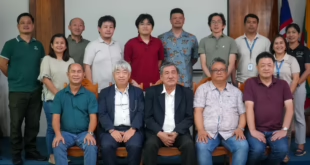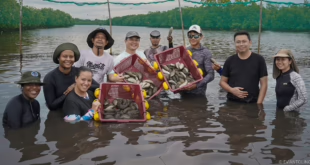 Freshwater crabs are no strangers to the island nation of Japan. One species, Geothelphusa dehaani, can be found almost all over the country. Despite this, these crabs have a hard time migrating across marine and even brackish bodies of water which means that populations of this species tend to be isolated from each other. So how did they end up so spread out across multiple islands separated by seawater?
Freshwater crabs are no strangers to the island nation of Japan. One species, Geothelphusa dehaani, can be found almost all over the country. Despite this, these crabs have a hard time migrating across marine and even brackish bodies of water which means that populations of this species tend to be isolated from each other. So how did they end up so spread out across multiple islands separated by seawater?
Scientists think that long ago these islands weren’t even islands, but one big landmass called Paleo-Honshu. This meant that these amphibious crabs could have scuttled across the land before they were separated by seawater. But is there any way to prove this?
SEAFDEC Associate Researcher Joana Joy Huervana, assisted by other researchers from Kyushu University, went about studying these Japanese freshwater crabs. They caught and identified 231 G. dehaani specimens from 26 populations across multiple islands. They then sequenced their DNA. After examining the specimens, they found that based on their DNA, these 26 populations descended from four genetically distinct ancestors: one from Southern Kyushu, one from Northwester Kyushu, one from Northeastern Kyushu, and perhaps most interestingly, a shared ancestor for populations from both Honshu and Shikoku island. These findings have many implications on the geological history of Japan and it’s all thanks to this little freshwater crab.
More details regarding this work can be found in the article entitled, “Preliminary assessment of genetic variation in the Japanese endemic freshwater crab Geothelphusa dehaani, based on mitochondrial DNA sequences,” which Ms. Huervana and her co-authors from Kyushu University published in the Biodiversity Data Journal. You may download a copy of the article here: https://repository.seafdec.org.ph/handle/10862/6452


 SEAFDEC/AQD Southeast Asian Fisheries Development Center | Aquaculture Department
SEAFDEC/AQD Southeast Asian Fisheries Development Center | Aquaculture Department



